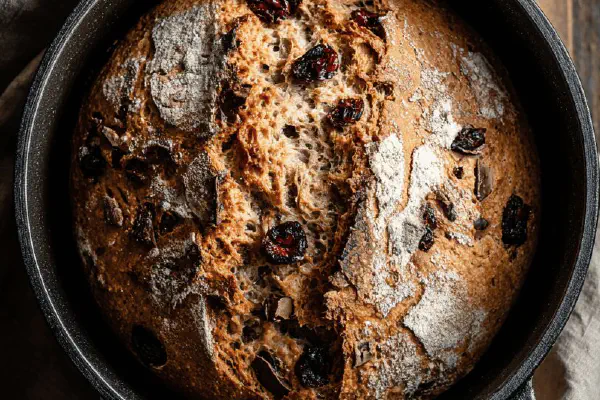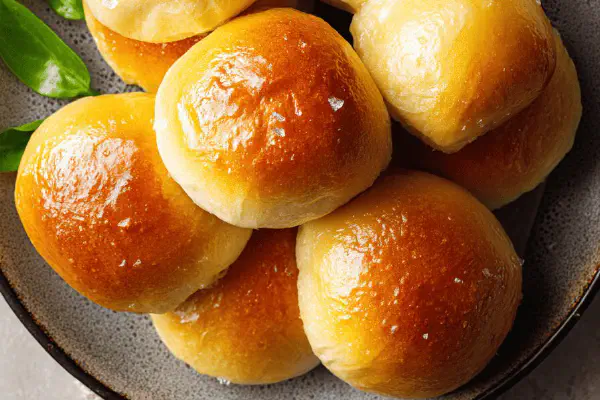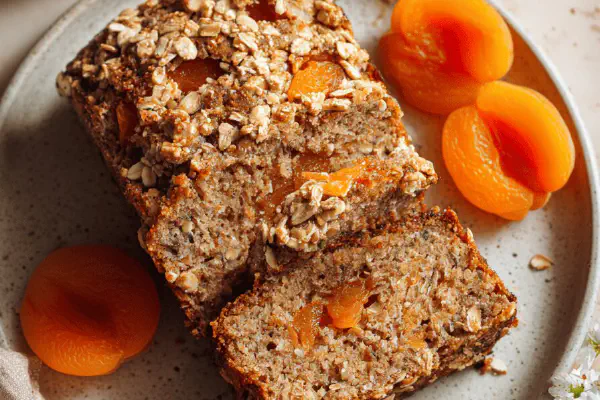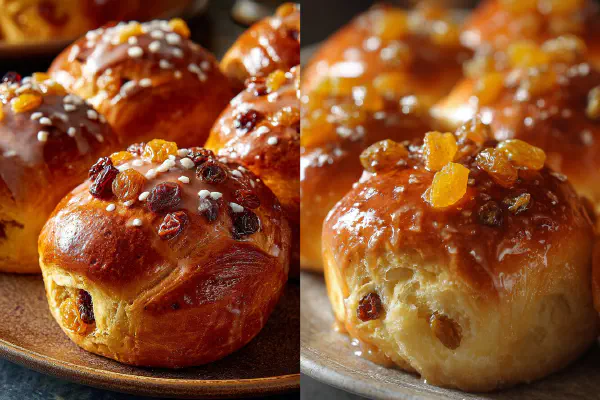Savory Herb Fougasse
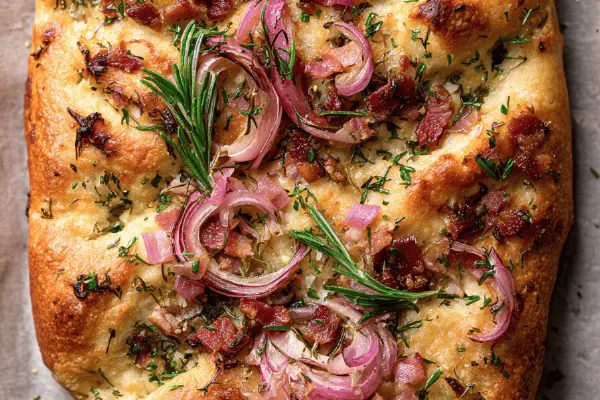
By Emma
Certified Culinary Professional
Ingredients
- 1 small red onion, coarsely chopped
- 4 slices pancetta, cut into thin strips
- 30 ml (2 tbsp) olive oil, divided
- 250 ml (1 cup) warm milk (~40°C)
- 15 ml (1 tbsp) honey
- 312 g (2 1/3 cups) unbleached all-purpose flour
- 4 ml (3/4 tsp) instant yeast
- 7 ml (1 1/2 tsp) sea salt
- 2 tsp fresh thyme leaves
- 1 garlic clove, minced
- fresh rosemary sprigs (optional)
About the ingredients
Method
- Heat a skillet medium, pour half the oil. Add onion and pancetta. Sauté slowly until pancetta crisps, onions soften and caramelized, about 7-8 minutes. Drain on paper towel, let cool enough to handle but still warm. This step tricks the dough with infused fat without sogginess.
- Mix warm milk with honey, stir until dissolved. Warm but not hot, important for yeast vitality.
- In a large bowl, whisk flour, instant yeast, salt, fresh thyme, and minced garlic evenly. Add milk mixture and remaining oil. Stir with spatula until shaggy dough forms. It looks sticky but resist adding flour yet.
- Generously flour your workspace. Tip dough out. Knead 7-8 minutes, pushing with heel, folding, turning. Dough becomes smooth, elastic, springy but slightly tacky—a good tease between under- and over-proofed dough. Avoid flour overdose. Pancetta and onions incorporated in next step.
- Fold cooled pancetta and onions gently into dough. If dough slackens too much, dust hands lightly with flour only to avoid dense loaf.
- Shape into round ball, coat with minimal oil, place in oiled bowl. Cover with damp kitchen towel, keep in warm draft-free spot about 35 minutes until nearly doubled. Proof times vary; dough should feel puffy, finger indentation slowly bounces back. Don't rush.
- Preheat oven to 230°C (450°F) with rack centered. Line baking sheet with parchment.
- Transfer dough to sheet. Press gently into oval approx 30 x 18 cm (12 x 7 inches). Using sharp knife or lame, make central long cut, leaving 3 cm (1 1/4 inch) at ends untouched. Along sides, make 5 angled slashes per side, resembling a leaf pattern.
- Stretch dough carefully at cuts to open 'leaves' wider without tearing. This controls crust thickness and crunch contrast. Let rest uncovered for 50-55 minutes to puff again, skin dry and firm but dough soft beneath.
- Before baking, brush gently with remaining olive oil, dust off excess flour with soft brush or hand. This adds shine and crisps crust further.
- Bake 25-28 minutes. Listen for crackling crust, golden brown hues, and firm hollow tap underneath. Every oven differs; adjust by watching colors and feel. Overbaked means dry crumb; underbaked gummy center.
- Remove to wire rack, cool completely before slicing. Crust loosens from steaming moisture, crumb sets with chewy openness. Early slicing traps steam and dulls crispy edges.
Cooking tips
Chef's notes
- 💡 Sauté pancetta and onions slow on medium-low. Render fat without crisp burn. Caramel smells deepen. Watch closely. Timing critical for flavor, texture. Drain off fat but keep some oil—dough fat should not saturate. Cool enough to handle, still warm. Adds moisture without sogginess. Too hot kills yeast later.
- 💡 Milk temp matters—target about 40°C, warm but not hot. Hotter kills yeast, ruins rise; colder slows proof drastically. Mix honey in milk, stir well till dissolved. Use instant yeast, fold dry into flour first to distribute evenly. Avoid adding flour early; sticky low hydration dough is okay. Adds chew and springiness.
- 💡 Knead 7-8 mins by hand. Push-fold-turn—feel dough’s life. Should bounce back slowly from finger dip. Resist flour overdose or stiffness. Knead texture is your best guess on timing proof success. Pancetta and onion fold in gentle, don’t deflate dough but incorporate without tear or lumps. Dust hands lightly with flour if sticky.
- 💡 Proof dough in warm draft-free spot; aim for near doubling. Finger poke test: soft but springs back slowly — no rush. Underproof smells raw, too wet or tight dough toughens crumb. Slashing pattern imitates leaves; cut 5 angled slashes each side, leave ends intact to hold shape. Cut sharp, avoid ragged tears.
- 💡 Stretch cuts gently to open leaf ‘windows’ wider. Don’t tear; slow stretching gives better crust contrast—thinner edge crunch, thicker base chew. Rest for 50-55 mins uncovered. Skin firm but pliable underneath. Before baking, brush with olive oil. Dust off excess flour or oil dulls crust shine and crispiness. Use soft brush or hand flick off.
- 💡 Bake on center rack at 230°C. Parchment prevents sticking, also protects bottom from burning. Listen for crackle as crust browns; golden hue visible. Tap bottom for hollow sound. Oven temps vary—watch color over clock. Overbaked crumbs dry; underbaked chew gummy and doughy. Cool fully on wire rack before cutting to let crumb set and edges crisp.
- 💡 Substitutions: pancetta for bacon cuts grease and smoky notes; sweeter more savory pork flavor. Red onion better choice—sweeter and deeper caramel than yellow. Honey does double duty as sweetener and moist crumb agent. Fresh herbs stronger than dried; adjust amounts if dried. Rosemary optional but infuses aroma if tucked beneath dough pre-proof. Instant yeast standard, fresh yeast possible with adjusted timing and proof separated first.
Common questions
Can I use bacon instead of pancetta?
Yes, but expect smokier flavor and more grease. Bacon cooks faster, might crisp unevenly. Pancetta is milder, fattier, less smoky. Adjust sauté time so onions don’t burn. Flavor profile shifts but still good.
How do I know if dough is proofed properly?
Finger poke test works best. Press lightly; dough springs back slowly not instantly. Puffy, slightly jiggly surface means ready. Underproofed feels dense, tight. Overproofed slack and might collapse when shaped. Timing varies by temp. Watch texture more than clock.
What if my dough is sticky during kneading?
Sticky dough normal here. Avoid adding too much flour; results in tough loaf. Dust hands and surface to manage stickiness only. Knead longer, dough firms as gluten develops. If too wet, flour dusting can help but don’t overload. Feel dough elasticity, not dryness.
Can I store fougasse after baking?
Wrap fully cooled loaf in foil or paper bag to keep crust from softening. Store room temp 2-3 days best. Refrigeration toughens crumb, avoid if possible. Freeze sliced in airtight bag for up to a month, thaw slowly. Reheat crust in oven to bring back crunch.
